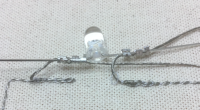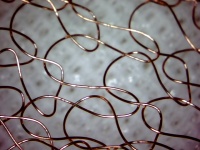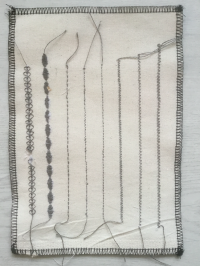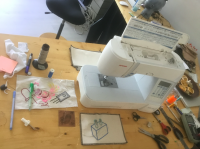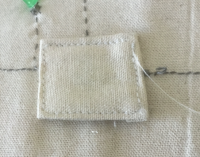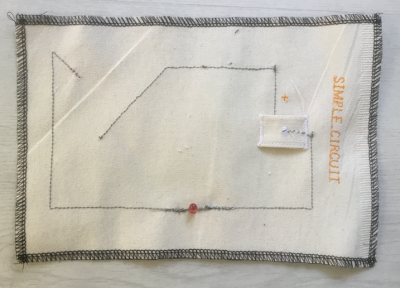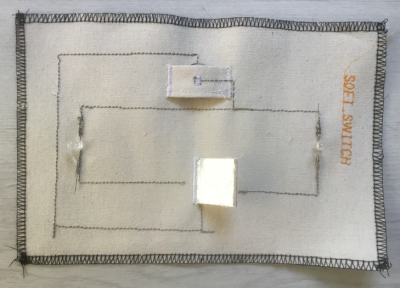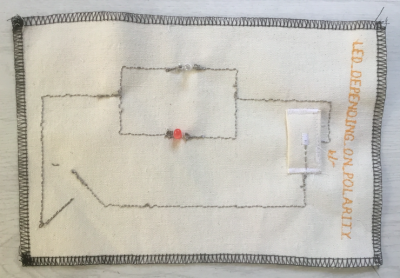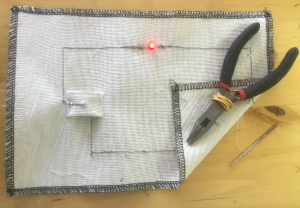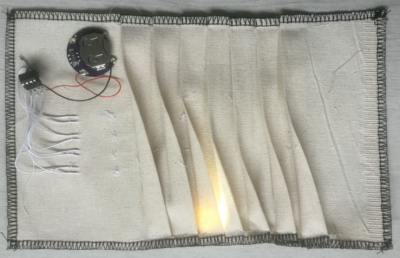Difference between revisions of "Swatch Making"
| Line 298: | Line 298: | ||
Different small screens are available, like LCD (one color) and TFT (color). | Different small screens are available, like LCD (one color) and TFT (color). | ||
| − | [[File:sr9.png| | + | [[File:sr9.png|600px]] LCD screen, only some text and numbers. It can be used for data, like the temperature "at that moment". This means you cannot show the change in temperature during a longer time in a graph. |
For displaying data, graphs (say the temperature during a day) and pictures a small TFT screen can be used. The TFT screen has "pixels" line 160 x 128, and fonts, and an sd-card to store images. | For displaying data, graphs (say the temperature during a day) and pictures a small TFT screen can be used. The TFT screen has "pixels" line 160 x 128, and fonts, and an sd-card to store images. | ||
| − | [[File:sr20.png| | + | [[File:sr20.png|800px]] Some examples, the data are clear, the left: the three circles are representing R - G - B data of the incoming light. The circles are always touching, the radius is the number, this is a small algorithm. The middle is "art" the data are noised by the colored squares, the resulting image is a bit more than boring numbers, the right is a bar chart. |
[[File:sr21.png|200px]] Some examples, a graph can be seen, changing in time, boring numbers and a representation of a sensor array at the right. | [[File:sr21.png|200px]] Some examples, a graph can be seen, changing in time, boring numbers and a representation of a sensor array at the right. | ||
| Line 308: | Line 308: | ||
You could fit the screen on the fabric without any support - just sew it with threads. | You could fit the screen on the fabric without any support - just sew it with threads. | ||
| − | [[File:sr11.png| | + | [[File:sr11.png|200px]] |
| − | [[File:sr10.png| | + | [[File:sr10.png|200px]] |
An application: | An application: | ||
Revision as of 18:45, 5 May 2020
in progress
intro
Making swatches for e-textiles.
The goal is to provide examples for simple and more advanced circuits on fabric.
The possibilities to make "soft" versions of electronic components like switches and battery holders.
preperation
Table with tools
Putting a special spool with conductive thread inside the sewing machine.
Lock Machine
Table with swatches
tools
Machines
- Sewing machine
- lock machine
- soldering station
- scissors
- needles
- stitch undo tool
electronics
- leds
- coin cell batteries
led conductive thread connection
Connecting the legs of the LED to the thread is always a bit of a problem.
There is a method making an eyelet of the leg of the LED and knotting the thread.
I trepide out a new way for me, with a small clamp:
materials
- non conductive materials
- conductive materials
- vlisofix plus aluminium foil
conductive threads
There are many different conductive threads. Some like the Karl Grimm silver thread can be soldered. Most others, which have a plastic kernel cannot be soldered.
For using conductive thread in my Janome sewing machine I have to change the bobbin holder. I then can put the stainless steel conductive thread in the spool.
All conductive threads have different properties. The most important property for the use in a circuit is the resistance. The resistance of a conductive thread can vary from very little (say less then 1 Ohm every 10 centimeters) to very high resistance, sometimes even kOhm or mOhm.
One of the swatches shows 6 different conductive threads.
On school we only have the stainless steel, which consists of steel fibers around plastic fibers. When you wash this thread it gets corroded, and will break down.
Many conductive threads can only be bought industrially and are not available for small consumers.
It is interesting to look at the conductive thread under the USB microscope, then you get a better understanding of the structure of the materials and you can understand why some of these threads break down easily.
Copper wire
This is used for winding coils. It is isolated, although you "see" the copper. It is called enamelled copper wire. To be able to solder or connect this wire you have to scrape the enamel from the wire, using a knife or sand paper.
The enamel and the copper can be seen in this picture. The wire in the coil had to be repaired, it had to be scraped to be able to solder it.
The soldering material will only stick where the enamel is removed. Here the soldiered joint can be seen under the usb-microscope.
That is why in a knitting of this wire, there is not a short-cut (if the enamel is not damaged).
ideas
- fabric battery holder
- making a circuit
- connecting a LED
- making a textile switch
Failures
I especially also add the failures. Otherwise it would seem that everything fitted without any effort, which is not true. Sometimes failures are more interesting than results. Failures do keep you moving while results are finished - dead.
From these what we call errors you learn the most. For example, I thought I would get a better connection by making the stitch length smaller. But then the stitching on the heavy material gets irregular.
That induced me making a swatch of the different stitch length. It turned out that the default stitch length of the machine 2.4 mm was the best. I also tried out some decorative stitches, and the zig zags.
Starting to add embroidery, things got wrong. This is the material which reminds you of the difference between your lofty ideas and the materials. If everything would go smooth and without any hiccups, no jumps would be made, everything would remain the same. Jumps on the other hand cost time. Maybe time is being made by the failures and the jumps.
Starting embroidery combined with conductive thread, things didn't came together...
The loop in the wire of the fabric speaker....somehow, in the middle of the windings, a loop was formed at the other side of the fabric, resulting in 2 cm of wire which had to be removed.
fabric battery holder
The last battery holder I made functioned, but is was also a bit inconvenient, because it was cumbersome to get the coin cell out. It was too stiff and has only one entrance.
Therefore I designed another way, a battery holder with two sides open. The base fabric holds a pattern of conductive thread and is for the larger + side of the battery. The fabric on top has a nudge of conductive material that pushes on the - side of the battery. There is of course a loop going on the outside to the minus, preventing a short cut.
nudge on top of the fabric made with a zig zag three times on top of it.
With a needle the wire has to be pushed through the material, otherwise there will be a short cut.
Placing the upper side of the fabric battery holder.
The piece is sewn on the base fabric using a zig zag, so that we don't have to fold the side again.
Connecting the wire to the wire of the circuit.
Intermediate stages
Because the sewing machine has a special spool cylinder for the conductive thread installed, the fabric battery holders have to be made later.
Simple circuit, with one LED. The corner fold is the switch.
Circuit with two LED's in parallel.
results - Swatches with conductive thread
results - Swatches about circuits
Testing the simple circuit
Testing the parallel circuit.
A Fabric Switch
results - The Soft speaker
(still to be finished)
A soft speaker can be built, by using conductive wire and a magnet, in combination with a 555 timer circuit with LDR, with a 9V battery.
The sound is really soft! The tone is varying according to the light on the LDR.
The schema of the circuit: https://cdn.makezine.com/uploads/2014/08/555ss_bboard_4-3-ratio_annotation.png
The circuit on the breadboard.
Three versions of a soft speaker. To the left: copper wire, sewn on the fabric, in the middle, spiral of copper sheet cut with a lino cutter. To the right the conductive metal wire, embroidered on the fabric. The problem with this is that the metal "sticks" to the magnets.
See also: https://www.kobakant.at/DIY/?p=3652
results - 7 LED's in Folding
(still some details, like embroidering the title on the swatch, have to be done)
Using the folds of fabric to hide the LED's and to get the light of the LED's reflected from the surface.
Microcontroller: ATTiny85, with 5 I/O pins, and 7 LED's so using Charlieplexing. This circuit runs at 3V.
The ATtiny85 can be programmed simple within the Arduino environment, using the ATtiny plugins.
The code can be found here: https://github.com/contrechoc/charlieplexed-swatch
results - fabric and TFT screen
For more advanced applications electronic components have to be sewn into the fabric.
Different small screens are available, like LCD (one color) and TFT (color).
 LCD screen, only some text and numbers. It can be used for data, like the temperature "at that moment". This means you cannot show the change in temperature during a longer time in a graph.
LCD screen, only some text and numbers. It can be used for data, like the temperature "at that moment". This means you cannot show the change in temperature during a longer time in a graph.
For displaying data, graphs (say the temperature during a day) and pictures a small TFT screen can be used. The TFT screen has "pixels" line 160 x 128, and fonts, and an sd-card to store images.
 Some examples, the data are clear, the left: the three circles are representing R - G - B data of the incoming light. The circles are always touching, the radius is the number, this is a small algorithm. The middle is "art" the data are noised by the colored squares, the resulting image is a bit more than boring numbers, the right is a bar chart.
Some examples, the data are clear, the left: the three circles are representing R - G - B data of the incoming light. The circles are always touching, the radius is the number, this is a small algorithm. The middle is "art" the data are noised by the colored squares, the resulting image is a bit more than boring numbers, the right is a bar chart.
![]() Some examples, a graph can be seen, changing in time, boring numbers and a representation of a sensor array at the right.
Some examples, a graph can be seen, changing in time, boring numbers and a representation of a sensor array at the right.
You could fit the screen on the fabric without any support - just sew it with threads.
An application:
 Project Laboratoire Aeroporté, 2019, Paillard, Poncé-sur-le-Loir
Project Laboratoire Aeroporté, 2019, Paillard, Poncé-sur-le-Loir
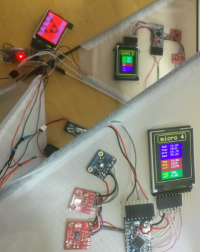 Project Laboratoire Aeroporté, 2019, Paillard, Poncé-sur-le-Loir
Project Laboratoire Aeroporté, 2019, Paillard, Poncé-sur-le-Loir
For other applications the components have to find a place inside the fabric and have to be supported by the fabric.
This simple way to cut a rectangle in for example paper is not giving a nice result in fabrics.
Another way to construct a window must be developed. Other solutions are possible, depending on your virtuosity with fabrics.
Also the electronics becomes more complex, with many wires. Here "normal" electrical wires are used, not the conductive thread. With too many wires, and batteries and many components the wires have to be isolated.
Some pictures of the result.
Pictures can be shown, or graphical representations, like graphs with data.
Remarks: I used here "another" and cheaper TFT screen. Normally with the libraries of Adafruit these screens will be running in no time. Of course around 10 wires must be soldered between the TFT screen and the microcontroller. But this other screen had some other properties. So it took me a few hours to figure out what was "different" or which wires were sewn wrongly. In the end it turned out to be the backlight of the screen which must be used, an extra LED connection. Also it can be seen in the pictures that the SD card is the bigger size, while the Adafruit TFT already uses the micro sd-card. So it can be that I saved a few euro's but then you have to be prepared for other characteristics or "retro" parts...
In all making this part of a swatch took me way longer than expected, the searching for the right way to use the TFT screen, and the development of the fabric window. Then the connection to the Lipo battery, with a switch, the programming and finding and making your own pictures, besides making graphs if data are displayed. The problem is also that your brains have to switch between many specifications, like sewing, electronics, programming, how to display data etc. This makes it practically impossible to do all in one day.
References
A movie of "the" e-textile swatch book 2013: https://www.youtube.com/watch?v=YcmxE24VdWA
Documentation of the e-textile swatch exchange books:
http://etextile-summercamp.org/swatch-exchange/category/2017/
http://etextile-summercamp.org/swatch-exchange/category/2016/
http://etextile-summercamp.org/swatch-exchange/category/2015/
http://etextile-summercamp.org/swatch-exchange/category/2014/
http://etextile-summercamp.org/swatch-exchange/category/2013/
Mika and Hannah: https://www.kobakant.at/DIY/
Many techniques and workshops are documented here:
http://etextile-summercamp.org/2016/
http://etextile-summercamp.org/2015/






